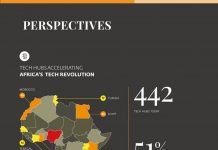For years, microfinance has been the buzzword in developing countries. Lending small amounts of money to local entrepreneurs and small businesses that lack access to banking and related services has long been heralded as a way to end poverty in developing countries.
While this has been successful in parts of South Asia for the most part, the effort has had mixed results in Africa, leading some African financiers to argue that microfinance – investing in big business – is the better way to spur economic growth. Ghanaian Sangu Delle, founder of Golden Palm Investments, an investment and advisory company, is a leading advocate of the macro-finance route.
“We seem to be fixated on this romanticized idea that every poor person in Africa is an entrepreneur. Yet, my work has taught me that most people want jobs,” Delle, who has funded startups that can generate jobs and have social impact, pointed out in a recent TED Talk. Significant job creation will come only through investing in big business, he argues.
Finance experts interviewed by AfricaStrictlyBusiness.com shared their thoughts on the state of microfinance in Africa, including major problems such as a lack of supervision and prohibitive interest rates on loans.
Benedikt Kramer, co-founder and CEO of awamo GmbH, a credit bureau for microfinance institutions in emerging markets, concedes that while microfinance has yielded positive results in Africa, it is only one of the necessary steps toward poverty eradication.
“There is not the one solution to eradicate economic inequality, but education along with access to finance have proven to be powerful tools for stimulating economic and cultural development worldwide,” Kramer says. “A functional microfinance sector is critical for the development of the bottom of pyramid population, particularly in rural areas. Microfinance can serve as a solid foundation for rural development and economic growth – there is scientific evidence on that. Thus I believe easy access to affordable finance is a necessary step fighting economic inequality.”
Giving money alone is not the solution either, one development expert says. “You need to give the poor other tools, such as capacity building, business training, money management, etc.,” says Juan Carlos López, projects coordinator with the Spanish Agency for International Development in Cape Verde. “To attack poverty, you must look at the roots of inequality and solve those issues. Just offering loans will not get at the roots of poverty. While micro-financing is a great tool to increase opportunities, especially for women and rural people, the roots of poverty and inequality must be addressed.”
López and Kramer see value in a combination of microfinance and big business investment.
“Both need to be invested in [but] more important than investing in big businesses is the investment in the African SME sector. Although some big businesses, such as mines and power plants, are based in rural locations they mainly help to develop bigger cities where the real beneficiaries are based,” says Kramer. “But the majority of the economically disadvantaged live in rural areas. Those people are the backbone of the economy and need a chance to get or create jobs and earn a salary. This will only work with a functional SME sector. The problem here is that most SMEs are served by MFIs (micro-finance institutions), which only have limited resources. Therefore it is often impossible for SMEs to access more capital, which hinders their growth.”
Moreover, says López, micro financing has limited scope, and therefore limited impact, unless local governments make it a national policy. “If microfinance is coming through an NGO, they have very limited resources and are usually regulated to working on just one part of a country or area,” he points out. “But if the government of a developing country had a national microfinance program this would make more of an impact. The best results occur, of course, when such programs are transparent and regulated.”
Lack of oversight, regulation and transparency, along with high interest rates that make it virtually impossible to repay loans, are major problems with microfinance in Africa, López notes. “You have NGOs, cooperatives, private institutions, rural institutions, etc., all involved in microfinance. The best actor to input regulations is the government.”
For Kramer, the current state of microfinance in Africa places a heavy burden on borrowers. “The situation in the microfinance sector right now – limited transparency, no efficient processes, no credit information sharing – leads to many problems such as borrowers’ over-indebtedness, high default rates and prohibitive interest rates of more than 60 percent a year on microloans,” he says.
Few doubt that microfinance can play an important role in economic growth and poverty eradication in Africa. But with so many players in the pool – each apparently playing to its own tune – and only mixed results to date, the current state of microfinance may be too cloudy for its own good.













